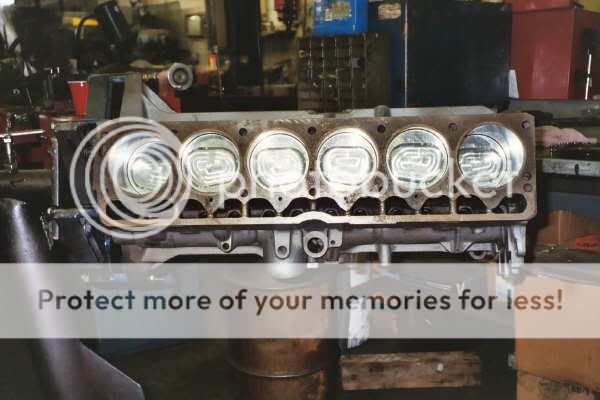Flash
NAXJA Forum User
- Location
- Evanston Wy
4.0 Stroker Crank
That is what i use in the advance search eng to learn all that i have so far!
OK my story first!....I won't to build a 4.5 or probable 4.6 stroker! the thing that's diff, then all that i have read so far, it that i what to build a stroker that pulls form.......well basically idle to 2500 maybe even as hi as 3500 rpm.
Torque is what is important to me, if i could make 300# torque and 100# horse power, that would be find with me!
If any one has a killer low end torque cam spec. that i can plug in to my dyno sim program, let me know.
My jeep is 89 Renix and is a stander with 3.07 gears and stock 27" tires(5th gear is useless)
Have a set of 3.55 housings, front and rear, that will be going in the jeep and 31/10.50/15 or maybe Even 32or 33/9.50/15.
Now, i know that if i am going to play in the rock, I will need much lower gear(higher numeral gear like 4.88) to be crawl over rocks with a stander tranny, let alone a lift kit!!!
I know, buying gears would be cheaper but not what i want to do.
Hoping also that 3.55 gears, instead of 4.88, should give me better gas mileage!?.:dunno:
OK now a couple of question to start with.
1. I will probably build the budget 4.6 but what would happen to the torque curve if i when with the much longer 6.125? 4.0 rods. would they make that much diff in low rpm. I know that the cost for piston would be High!
2. Quench, witch would be the best(most efficient) .020 or .100?
A. What is the minimal head to piston clearance?
B. With the focus on low rpm, could i run the stock fuel inj and pump?
3. Using the HO head be worth finding and using with the build. would it really have any that much advantage........and what about the newer equal length intake. sound like it would take some mods to do it any ways!
4. Pretty sure that i want the 12-258 crank, but the crank spacer that you can hack of from and old harmonic balancer or cutting 10mm of the crank don't make sense to me???? one way will move the HB towards the end and the ether way would move it toward the radiator?????
5. what vehicles have the 12-358 eng?.....80 and older AMC...right?
did ford ever us this eng and if so in what?
Flash.
That is what i use in the advance search eng to learn all that i have so far!
OK my story first!....I won't to build a 4.5 or probable 4.6 stroker! the thing that's diff, then all that i have read so far, it that i what to build a stroker that pulls form.......well basically idle to 2500 maybe even as hi as 3500 rpm.
Torque is what is important to me, if i could make 300# torque and 100# horse power, that would be find with me!
If any one has a killer low end torque cam spec. that i can plug in to my dyno sim program, let me know.
My jeep is 89 Renix and is a stander with 3.07 gears and stock 27" tires(5th gear is useless)
Have a set of 3.55 housings, front and rear, that will be going in the jeep and 31/10.50/15 or maybe Even 32or 33/9.50/15.
Now, i know that if i am going to play in the rock, I will need much lower gear(higher numeral gear like 4.88) to be crawl over rocks with a stander tranny, let alone a lift kit!!!
I know, buying gears would be cheaper but not what i want to do.
Hoping also that 3.55 gears, instead of 4.88, should give me better gas mileage!?.:dunno:
OK now a couple of question to start with.
1. I will probably build the budget 4.6 but what would happen to the torque curve if i when with the much longer 6.125? 4.0 rods. would they make that much diff in low rpm. I know that the cost for piston would be High!
2. Quench, witch would be the best(most efficient) .020 or .100?
A. What is the minimal head to piston clearance?
B. With the focus on low rpm, could i run the stock fuel inj and pump?
3. Using the HO head be worth finding and using with the build. would it really have any that much advantage........and what about the newer equal length intake. sound like it would take some mods to do it any ways!
4. Pretty sure that i want the 12-258 crank, but the crank spacer that you can hack of from and old harmonic balancer or cutting 10mm of the crank don't make sense to me???? one way will move the HB towards the end and the ether way would move it toward the radiator?????
5. what vehicles have the 12-358 eng?.....80 and older AMC...right?
did ford ever us this eng and if so in what?
Flash.
Last edited:

